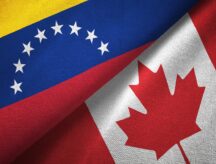The Provincial Nominee Program: Do newcomers stay in their province of landing?
The Provincial Nominee Program (PNP) is a leading way to immigrate to Canada as a skilled worker. Nearly every province and territory operate the PNP to nominate and welcome skilled workers to come settle in their respective jurisdiction.
Discover if You Are Eligible for Canadian Immigration
The program was designed to contribute to a more equitable distribution of new immigrants across the country, primarily to locate more immigrants outside the three major Canadian cities and to help meet labour force needs of employers in the provinces. Another objective of the program is to retain and integrate the newcomers in their nominating province or territory.
Provincially nominated immigrants must demonstrate a genuine intention to live in the nominating province to be granted permanent resident status in Canada. However, once landed, the nominee is not restricted from leaving the province.
Statistics Canada has recently released a study that examined the PNP, specifically the retention of newcomers in the province they choose to land in. Statistics Canada used data from the Immigrant Landing File and tax records, along with three indicators of retention, to measure the tendency of a province or territory to retain its immigrants.
The results of the study showed that the retention of PNP immigrants in the province or territory of landing was generally high.
Overall, 89% of the provincial nominees who landed in 2019 had stayed in their intended province or territory by the end of the landing year. However, there was a large variation by province or territory, ranging from 69% in Prince Edward Island to 97% in Ontario. The rate was 95% in British Columbia, 92% in Alberta, 88% in Manitoba and 78% in Saskatchewan.
Of those nominees who stayed in their province at the end of year, a large proportion (in the mid 80% range) remained in that province five years later. Similarly, there was a significant variation by province, ranging from 39% to 94%.
However, the longer immigrants stay in Canada, the less likely that are to remain in their initial province of residence. For immigrants who landed in 2010, the 1-year provincial retention rate was 95.8% among provincial nominees, the 5-year rate was 88.7% and the 10-year rate was 84.4%. Though this may be the case, these numbers still represent a high percentage, meaning overall, most provincial nominees stay in their initial province even 10 years after migration.
What provinces had the highest retention rates?
Differences in provincial economic opportunities and conditions will affect the retention rates of a province. The size of a province may also affect the retention rate, as a larger province provides more locational choices for immigrants to move for economic opportunities within the province and therefore decreases the need for immigrants to move out of the province. In addition, city size matters, as retention rates tend to be the highest in large cities like Toronto and Vancouver.
Ontario, Alberta and British Columbia had the highest PNP retention rates, while Newfoundland and Labrador, Prince Edward Island and New Brunswick had the lowest. The gap among provinces tended to increase significantly as more years went by since immigration.
The provincial unemployment rate explained some of the differences in retention rates between the Atlantic provinces and Ontario, Alberta, and British Columbia. However, even after adjusting for a large set of control variable, a significant retention rate difference still existed between the provinces.
What province are immigrants migrating to?
Provinces can benefit not only from provincial nominees who land in the province initially and remain there, but also from those who, after landing, moved to the province from elsewhere in the country.
Ontario is a “magnet” for the secondary migration of provincial nominees. By the end of the first full year following the landing year, Ontario had 23% more provincial nominees that were in the province during the landing year. By the end of the fifth year following the landing year, Ontario had 56% more nominees.
In particular, after accounting for the provincial nominees leaving the province and those coming to the province, Ontario was the only province or territory that had a large net gain from this process, as it had significant influx of provincial nominees from other provinces.
- Do you need Canadian immigration assistance? Contact the Contact Cohen Immigration Law firm by completing our form
- Send us your feedback or your non-legal assistance questions by emailing us at media@canadavisa.com







